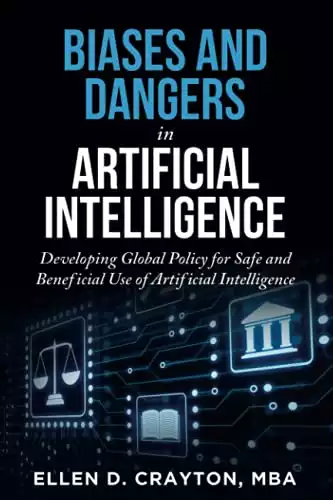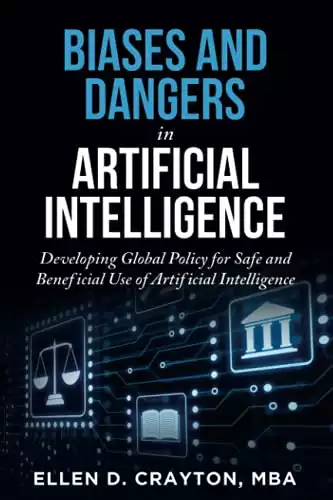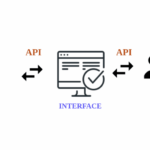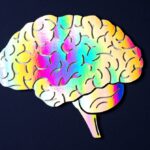Introduction – AI Enabling Concentration Of Power
Artificial Intelligence (AI) has undeniably become a force to be reckoned with in today’s world. With its rapid technological developments, it has proven to be a powerful technology with the potential to reshape various aspects of human life. Despite the countless advantages and possibilities it presents, the rise of AI has also led to a worrying concentration of power.
This concentration is often in the hands of tech companies, governments, or a select few individuals who have the resources to develop or control these complex systems. As a result, the potential risks associated with AI, such as cybersecurity threats and exploitation by bad actors, are magnified.
A concentration of power in the realm of AI not only brings about potential economic and social disruptions but also poses an existential risk to society. This is because such a concentration could lead to decisions and actions that have a far-reaching impact on human life, yet are controlled by a narrow group with specific interests.
Whether it’s through the monopoly of AI technologies or the control of digital infrastructures, this concentration of power can become a tool for harmful actions if it ends up in the wrong hands. Therefore, the need to address this concentration and its implications cannot be overstated.
Table Of Contents
Monopolization of AI Technologies
The rise of AI has given enormous leverage to tech companies that specialize in this field. These companies have significant resources at their disposal, which they use to fund research, acquire startups, and dominate the market. This kind of monopolistic control results in an arms race where only the players with the most resources can compete. Such a monopoly can hinder innovation, lead to data hoarding, and restrict the broader societal access to technology.
As these tech giants continue to grow, they acquire more user data, enabling them to improve their AI algorithms further. This creates a vicious cycle: the better their technology, the more users they attract, and the more data they gather.
All of these factors together lead to economic growth but also contribute to increasing social inequality. As AI takes over tasks traditionally performed by human labor, job markets are affected, creating a widening gap between those who control the technology and those who are controlled by it.
The monopolization of AI technologies also raises significant organizational risks. The concentration of technological assets in the hands of a few can lead to a lack of oversight and ethical considerations.
There is a severe risk that these companies could misuse the massive datasets they collect for unfair practices, like manipulating consumer behavior or enabling pervasive surveillance.
Also Read: Dangers Of AI – Security Risks
The Rise of AI Oligarchs
The exponential growth in the capabilities and reach of AI has led to the emergence of what can be called “AI Oligarchs”—a small group of individuals who have become incredibly wealthy and influential by mastering the science and business of AI.
These oligarchs have a disproportionate influence over the digital infrastructure that forms the backbone of modern economies. Their decisions, whether about the deployment of facial recognition technology or the algorithms that determine what news we see, have significant societal implications.
The influence of these oligarchs often extends to political spheres. They can effectively shape policy decisions related to technology, privacy, and even national security. It creates a fertile ground for bad actors to influence these magnates, consciously or subconsciously, leading to potentially harmful decisions that could affect millions of lives.
As these individuals gain more influence and control, the potential for malicious activities increases. The concentration of so much power and resource in the hands of a few raises questions about equitable access and ethical use of AI.
It also poses a real threat in terms of cybersecurity risks, as bad actors may target these powerful individuals to gain control over essential AI technologies.
AI-Driven Social Inequality
AI’s impact on social inequality is becoming increasingly apparent. The deployment of powerful technology like facial recognition is often done without public consent, leading to concerns about digital surveillance. For those who do not understand these complex systems or cannot afford access to technology, the divide only grows wider. This form of inequality goes beyond just economic aspects. It touches on the ability of individuals to participate in a rapidly evolving digital society.
Social media platforms, often driven by AI algorithms, play a role in shaping public opinion and social behavior. These algorithms can be manipulated to amplify certain viewpoints over others, effectively influencing what sections of the populace see and hear.
This influence can be wielded to fuel conspiracy theories or even mobilize people for political causes, often without the knowledge or understanding of those being influenced. In this way, AI serves as a tool that can deepen existing societal divisions.
AI’s role in social inequality is not just a byproduct of technological developments. It is often a design choice made by those who control these systems. These choices can result in systems that favor particular groups of people over others. Be it in terms of delivering services, opportunities for economic growth, or even access to critical infrastructure. The designers of these systems are often far removed from the people who are most adversely affected, creating an ethical dilemma that is hard to resolve.
Also Read: Dangers of AI – Bias and Discrimination
Data Hoarding and AI Giants
Data is the lifeblood of AI systems, and tech companies often go to great lengths to collect it. This hoarding of data by AI giants is a significant issue that contributes to the concentration of power. With more data, these companies can train more advanced generative models and language models, further solidifying their dominant position. The more data these companies hoard, the more accurate and capable their AI systems become. It creates a snowball effect that further entrenches their market position.
This concentration of data presents an existential risk, both in terms of how it can be used and who has access to it. Given the value of data, it becomes a prime target for bad actors looking to exploit this concentrated resource for malicious purposes, adding another layer of cybersecurity risks. The collection of vast amounts of personal data for AI training also raises significant privacy concerns. Especially if that data is used for digital surveillance or other invasive practices.
This hoarding of data restricts its availability for public use or scientific research. Thus limiting the benefits society at large could gain from it. The lack of access to essential data sets is a hindrance to smaller entities or researchers who aim for human-centered development. This further exacerbates social inequality and posing organizational risks.
Intellectual Property and AI Dominance
Intellectual property in the field of AI is another key factor contributing to the concentration of power. Tech companies and AI oligarchs often hold a multitude of patents, creating a barrier for newcomers and limiting the democratization of this powerful technology. These intellectual property rights serve as a form of economic moat. Which makes it difficult for smaller companies or individual researchers to contribute to the field meaningfully.
The ownership of intellectual property related to AI technologies can also have geopolitical implications. Nations vie for control over these valuable assets, making it a sort of arms race on a global scale.
This competitive landscape creates a breeding ground for bad actors who can exploit loopholes in international law. They can engage in corporate or state espionage to gain an unfair advantage.
Control over intellectual property also presents an ethical dilemma. On one hand, it protects the investment and encourages innovation among those who have developed these technologies. It limits the broader human-centered development of AI, as it restricts who can use these technologies and for what purpose. It makes it easier for these technologies to be deployed in ways that may not align with the broader good. This includes the spread of digital surveillance, pervasive surveillance technologies, or even forms of social manipulation.
AI in Political Manipulation
Artificial Intelligence has a growing role in shaping political landscapes. Language models and social media platforms are increasingly used in spreading political messages, sometimes without the oversight of human intelligence. This unchecked spread can lead to the dissemination of conspiracy theories or false information. As a result, AI becomes a tool for bad actors looking to manipulate public sentiment and election outcomes.
The potential risks associated with AI in political manipulation also include more covert operations like data breaches and cyber espionage. Given the power of AI to analyze vast amounts of data quickly, it’s becoming a useful tool for those looking to exploit weaknesses in digital platforms or critical infrastructure for political gain. This poses a substantial cybersecurity risk and could undermine the democratic process.
With AI technologies capable of manipulating videos and audio, the potential for spreading misinformation is high. These technological developments also introduce ethical dilemmas: Who gets to control or regulate this technology? How do we prevent misuse while ensuring freedom of expression? The presence of AI in political manipulation introduces a complex array of challenges that have no easy answers.
Algorithmic Control and Public Discourse
Algorithms play an increasingly vital role in shaping public discourse. Social media platforms use AI algorithms to decide what content is shown to users, influencing public opinion in the process.
Large tech companies or bad actors who understand how these algorithms work can manipulate them to serve their interests. This manipulation concentrates power and lets a few control public discourse, rather than allowing for a democratic space.
In a world where information is power, algorithmic control over what people see and hear poses a potential existential risk to democratic societies. This can lead to the amplification of extreme views, create echo chambers, and even promote conspiracy theories. Such a state of public discourse is not conducive to constructive debate or the healthy functioning of a democracy.
Algorithmic control also raises several ethical dilemmas and regulatory challenges. The use of AI to control public discourse could lead to a lack of accountability. Decisions made by machines don’t have the ethical considerations that a human might have, making it hard to question or challenge those decisions. The algorithms’ lack of transparency makes it hard to understand the reasoning behind certain decisions, posing a significant concern for any democratic society.
Centralized Decision-Making in AI Systems
The architecture of many AI systems involves centralized decision-making, often located within the tech companies that develop them. These companies thus become gatekeepers, controlling access to technology, economic growth, and even cognitive skills. Such centralization poses an existential risk if those at the helm make decisions that are harmful to society at large.
Centralized decision-making in AI systems can be vulnerable to various forms of exploitation. Malicious actors could target these central nodes for cyberattacks, leading to catastrophic risks if they succeed. Even without external bad actors, the concentration of decision-making power can lead to systemic biases, flawed algorithms, or the unfair distribution of resources.
This centralization also presents significant regulatory challenges. How can governments or international bodies regulate such concentrated forms of power effectively? The lack of a distributed system makes it easier for those in control to resist regulatory oversight, raising several ethical and practical concerns about how to ensure the technology benefits humanity as a whole.
Also Read: Role of Artificial Intelligence in Transportation.
Ethical Dilemmas in AI Power Structures
The concentration of power in AI introduces numerous ethical dilemmas. For instance, who gets to decide the rules governing the use of facial recognition technology or pervasive surveillance systems? How do we balance the pursuit of economic growth with the need for human-centered development? These are complex questions without easy answers, made even more complicated by the rapid pace of technological developments.
One significant ethical dilemma involves the risk that AI systems could perpetuate existing societal biases. Many systems train on data already tainted by societal prejudices and inequalities. Without careful management, AI might strengthen these biases instead of helping to eliminate them. This issue becomes especially urgent when considering the potential use of AI in critical areas like healthcare, law enforcement, and education.
The ethical dilemmas extend to the international arena as well. Different cultures and societies have varying ethical norms and values, making it a monumental challenge to develop a one-size-fits-all approach to AI ethics. It’s crucial to involve diverse perspectives in the development and governance of AI technologies to minimize biases and make the technology more inclusive.
Also Read: Dangers of AI – Ethical Dilemmas
Regulatory Challenges in Curbing AI Power Concentration
Regulating the concentration of power in AI is a daunting task. The technology is evolving rapidly, often outpacing the laws and guidelines meant to govern it. Regulatory bodies face the challenge of understanding highly complex, ever-changing technological landscapes, making effective oversight difficult. Bad actors can exploit loopholes and misuse powerful technology in this environment.
One of the most pressing regulatory challenges is the international nature of AI development. Tech companies operate across borders, and their products are used globally. This makes it challenging to create and enforce laws that can effectively oversee the use and development of AI. Moreover, as nations compete in the AI arms race, there’s a risk that regulatory challenges will take a backseat to national interests.
The lag between technological advancements and regulatory oversight also presents an existential risk. The time it takes to understand the implications of new AI capabilities and then to enact appropriate laws can be considerable. During this gap, the potential for misuse is high, posing immediate and long-term risks to society.
Also Read: Top Dangers of AI That Are Concerning.
Conclusion
A compromised AI system could endanger essential services, from electricity grids to healthcare systems, exacerbating existing social and economic inequalities.
The monopolization of AI technologies and the rise of AI oligarchs contribute to these problems. By centralizing decision-making and resource allocation, these entities can dictate the direction of AI development to suit their interests. They decide how AI impacts industries, from automating jobs to implementing digital technologies in critical infrastructure. This concentration of power limits the agency of individual human workers, policymakers, and smaller businesses, all while increasing the existential risks posed by misuse or even well-intentioned but flawed applications of AI.
When discussing the centralization of AI power, it’s crucial to consider its societal implications. From affecting our personal freedoms through digital surveillance to restructuring job markets, the impact is pervasive. The pace at which AI is evolving makes it challenging to establish effective governance and ethical guidelines. AI is taking over even cognitive tasks like decision-making and problem-solving, and this shift could affect human cognitive development in the long term.
Given these considerations, the urgency for a comprehensive approach to regulate and manage AI is apparent. If we don’t promptly address these challenges and ethical dilemmas, we put ourselves at risk of creating a future where AI’s downsides outweigh its benefits. Existing inequalities may become more entrenched, digital privacy could suffer compromises, and power may concentrate in the hands of a select few. All of this could happen while we celebrate technological progress.
References
Müller, Vincent C. Risks of Artificial Intelligence. CRC Press, 2016.
O’Neil, Cathy. Weapons of Math Destruction: How Big Data Increases Inequality and Threatens Democracy. Crown Publishing Group (NY), 2016.
Wilks, Yorick A. Artificial Intelligence: Modern Magic or Dangerous Future?, The Illustrated Edition. MIT Press, 2023.
Hunt, Tamlyn. “Here’s Why AI May Be Extremely Dangerous—Whether It’s Conscious or Not.” Scientific American, 25 May 2023, https://www.scientificamerican.com/article/heres-why-ai-may-be-extremely-dangerous-whether-its-conscious-or-not/. Accessed 29 Aug. 2023.












